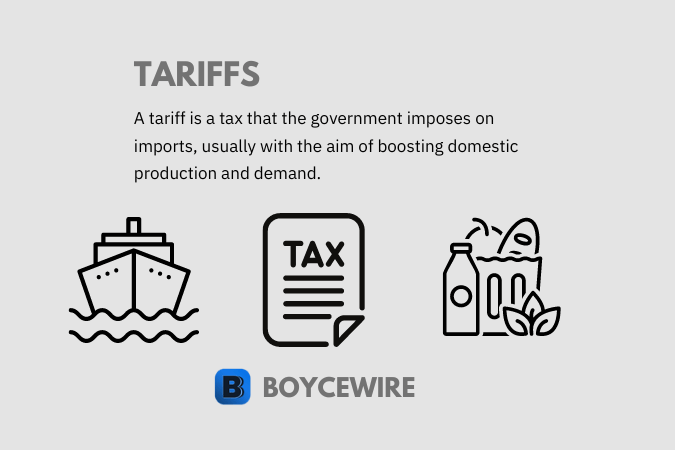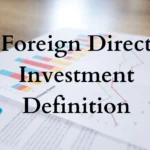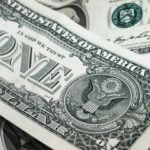Tariffs: Definition, Types & Example

What Is a Tariff?
Tariffs are taxes imposed on imported goods upon arrival at customs from sea, air or land. A tariff rate is determined based on the current schedule, which is a list of items that are taxed differently.
For example, an Apple MacBook imported from China may have a 10% rate, while a Sony TV may have only a 5% rate. This is the percent the government collects in tax to allow those goods into the country.
The revenue generated from tariffs goes to the government, making it an indirect form of taxation. So consumers are not taxed directly, but through the import process.
Governments often use tariffs as a tool to protect domestic industries by making foreign goods more expensive and less competitive. However, they can also lead to retaliatory tariffs from other countries and harm international trade relations.
Key Points
- A tariff is a tax on imported goods that is directly paid for by the importer.
- There are four types of tariffs – Ad valorem, Specific, Compound, and Tariff-rate quota.
- The main aim of tariffs are to protect domestic industry, protect domestic jobs, national security, and in retaliation to other nations tariffs.
A country can impose higher tariffs on imported goods to protect its domestic jobs from foreign competition. For instance, the US car manufacturing industry has struggled with cheap imports for years, but recent tariffs have helped to level the playing field.
By increasing the cost of imported goods, manufacturers are incentivized to produce domestically instead of paying the higher fees. This can lead to the creation of more domestic jobs and a boost to the local economy. However, it may also result in higher prices for consumers and trade retaliation from other countries.
How Does a Tariff Work?
A tariff is a tax on imported goods, but the specifics of how it works depend on various factors. These include the value of the imported goods and the process by which each country handles imports. To better understand, let’s consider the United States as an example.
Section 321 – Imports Under $800
In the US, items valued at or below $800 are exempt from import duties for US residents. This exemption falls under Section 321 of the Customs Act. It is a streamlined process that requires less paperwork, but there are still regulatory requirements that must be met. For example, items such as food, cosmetics, and drugs are not eligible for this exemption as they require inspection by the Food and Drug Administration (FDA).
Informal – Imports Under $2,500
For informal imports in the US, there is no tariff to be paid. However, the goods still need to be registered with Customs due to regulatory requirements for certain products such as food, drink, and drugs. These exempt products must be inspected regardless of their value. Additionally, no Customs Bond is required for informal imports.
Although no tariff is applicable, a merchandise processing fee ranging from $2 to $9 per shipment is charged for informal goods.
Formal – Imports Over $2,500
Formal imports are liable for import tariffs. They also require what is known as a Customs Bond. This is simply a contract between the importer and Customs that guarantees payment of import duties and taxes. These are usually purchased through a Customs Broker, or alternatively, can be purchased directly through a surety license by the Treasury Department.
So for goods over $2,500, the importer must pay any tariff duties that are due to Customs. This must be paid before the goods are released.
Conclusion on how tariffs work
In simple terms, an importer has to fill out the relevant forms with Customs. As part of this process, both parties will identify and certify any tariff duties due. This will then be paid before the goods are released.
The amount due is dictated by the Harmonized Tariff Schedule. This is essentially a database that stores all the different amounts importers must pay for each product. In addition, it is split down by different rates depending on other nations trade arrangements. So imports from China may be due a higher tariff than France.
Who Pays for Tariffs
Technically speaking, importers pay for the tariffs. This is paid upon entry into the country. However, these costs are usually passed directly onto the customer through higher prices.
Consumers
As seen during the Chinese – US trade war, businesses have no choice but to increase prices to consumers. The cost to move and invest in another country would cost business billions after many have already relocated to China and other nations. This led to a number of companies stating in 2019, that prices would rise, jobs would be lost and profits fall.
The logic is quite clear. By imposing a higher tariff, it creates an additional cost to the supplier. This works in the same way higher input or labor costs would have. If it costs more to supply the product, then this will be reflected in the price.
Research shows that between February 2018 and January 2020, the US spent over $46 billion on tariffs.
Corporations
Some corporations may not necessarily pass on 100 percent of the costs. Inside, they may absorb some of the costs into profits. This may be in order to maintain consumer demand if pricing is sensitive to change. Increasing prices might significantly affect demand for the companies goods, so it may be more profitable to take a small hit to profits instead. So whilst consumers pay more, some corporations will also take a hit.
China
On the other hand, tariffs can cause shocks in exchange rates. As we have seen between the US and China, the Chinese Yuan weakened significantly. In turn, the cost of Chinese imports has become naturally cheaper as the US Dollar can buy more. So the cost of Chinese goods has become cheaper, but those lower prices haven’t been passed onto the consumers due to the additional tariff. However, it means Chinese companies are still able to obtain US business.
US Exporters
Consumers pay the majority of the costs, however, corporations also take a hit. At the same time, exchange rates matter, and the lowering Chinese Yuan has limited the impact on consumers. Chinese importers are getting paid the same in Yuan, but lower levels are US dollars, so it has made US imports to China more expensive. In turn, this has affected US exports to the region as they have become comparatively more expensive to Chinese importers.
4 Types of Tariffs
Ad valorem Tariffs
The term ‘ad valorem’ comes from the Latin meaning ‘according to value’. So in terms of tariffs, it relates to what is due, depending on how much the good is worth. This comes in the form of percentages rather than specific monetary values. For instance, there is a 10 percent tariff on imported motor vehicles. If the car is worth $10,000, the tariff would equal $1,000. However, if the car is $20,000 then it would equal $2,000.
Specific Tariffs
A specific tariff is one that is directly imposed on one product but does not depend on its value. This is usually imposed based on a unit or weighted unit. For instance, certain types of milk to the US face a tariff of 3.2 cents per litre. It is easy enough to confuse specific tariffs with ad valorem tariffs. However, the key difference is that a specific tariff is linked to the number of units coming in. This is in contrast to Ad valorem tariffs which solely look at the value.
Compound Tariffs
A compound tariff is essentially a combination of both an ad valorem and specific tariff. So it includes both a cost per unit, e.g. $1 per kilogram, as well as a set percentage on the value of the good, for instance, 10 percent.
Tariff-rate Quota
A tariff-rate quota combines two trade policies in tariffs and quotas. It works by imposing a set tariff on imported goods up to a certain amount. For instance, there may be a 10 percent tariff on imports of up to 1,000 units. However, for goods imported that exceed those 1,000 units, the tariff will increase. For instance, it may rise to 30 percent.
Why Tariffs are Used
Tariffs are used for a number of reasons. Some nations may focus solely on one factor, whilst others may keep all of them in mind.
1. Protect Domestic Employment
By imposing a cost on importers, their goods become more expensive. As a result, it provides a competitive edge to domestic suppliers. For instance, a Chinese manufacturer may want to import shoes into the US market. Its price is $80, whilst the domestic competition sells a similar product for $100. A tariff of 30 percent may be imposed, which would increase the price to $104. In turn, Chinese shoes become less desirable.
Without the tariff, Chinese shoes are cheaper and will be seen as desirable by many consumers. In turn, this takes away demand from domestic suppliers, meaning they need to make fewer shoes. As a result, domestic suppliers will need fewer employees in their factories and offices.
In big markets such as manufacturing, the loss of jobs is noticeable. So governments look to garner public support by providing protection to such industries. Whilst this may not affect the voting intentions of the wider population, it can play an important role in winning the worker’s votes.
2. Infant Industries
In new and upcoming industries, some countries look to protect small firms from international competition. This generally happens in developing nations but is also used occasionally among developed nations.
The concept of infant industries stems from the idea that new firms need to be protected in order for them to flourish. For example, South Africa is not known for its manufacturing of cars. However, it can import big brands such as Ford. Inevitably, that makes it incredibly difficult for local manufacturers to compete. Not only do they have to compete with the brand, but also the price and efficiencies.
Certain nations may look at an industry and believe that it should be nurtured so it can grow. This may be because the industry is crucial for the nation’s defence or wellbeing, or perhaps the nation aims at creating new employment opportunities.
3. National Security
Industries such as steel, technology, and aerospace are all seen as key to national security. There is even a case to be made in agriculture. For example, should a nation go to war, it may become dependent on its internal ability to produce food. As a result, these industries are seen as crucial components that must be protected.
Not only are tariffs generally imposed, but subsidies or even nationalisation of industries has occurred.
4. Retaliation
As we have seen in the trade war between the US and China, countries can impose tariffs in retaliation. For instance, the US imposed tariffs on China because of the existing high tariffs on its exports. The goal was to get China to reduce its own tariffs. However, what ensued was a retaliation with ever-increasing tariffs.
Nations may also place tariffs in retaliation to aggressive practices employed by foreign powers. For example, the US raised its steel tariffs to 522 percent in retaliation to China dumping steel into the market. The aim of such acts by foreign nations is to destroy domestic industries to enable them to take market share and face unchallenged competition.
FAQs
A tariff is a tax on imported goods. It is paid for predominantly by consumers. However, a combination of corporations, exporters, importers, and other nations may also pay a price.
A tariff is charged by the Customs Border Patrol to importers at the point of entry. The tariff must then be paid before any items are released.
Tariffs do not help the economy. However, the only potential advantage would be if it strengthens the domestic currency, thereby making imports cheaper. Although this would be mostly absorbed by higher tariffs, whilst also detrimentally affecting domestic exporters.
Ultimately, consumers pay for tariffs through higher prices on imported goods. Domestic producers benefit from the increased demand for their products, but consumers bear the burden of higher prices.
The impact of tariffs on an economy depends on various factors, such as the industries affected and the extent of trade with other countries. In some cases, tariffs can protect domestic industries and jobs, but in other cases, they can harm consumers and result in higher prices and reduced international trade.
About Paul
Paul Boyce is an economics editor with over 10 years experience in the industry. Currently working as a consultant within the financial services sector, Paul is the CEO and chief editor of BoyceWire. He has written publications for FEE, the Mises Institute, and many others.

Related Topics
Further Reading
 Foreign Direct Investment (FDI): Definition, Types, Pros & Cons - The act of a company from one nation investing in another - be it to expand production or purchase another…
Foreign Direct Investment (FDI): Definition, Types, Pros & Cons - The act of a company from one nation investing in another - be it to expand production or purchase another…  Universal Basic Income will be a disaster - Universal Basic Income is a disaster waiting to happen The case for a Universal Basic Income (UBI) is a strong…
Universal Basic Income will be a disaster - Universal Basic Income is a disaster waiting to happen The case for a Universal Basic Income (UBI) is a strong…  Capital Asset Pricing Model - The Capital Asset Pricing Model (CAPM) is a financial model used to estimate the expected return on an investment based…
Capital Asset Pricing Model - The Capital Asset Pricing Model (CAPM) is a financial model used to estimate the expected return on an investment based… 